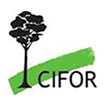It’s almost a cliche to say that local communities must be engaged meaningfully in sustainable resource management efforts. Yet examples of doing so effectively remain thin on the ground.
The Indonesian island of Sulawesi offers an ideal place to observe the impact of one such attempt to decentralize forest governance. Its rugged interior and remote peninsulas house large numbers of endemic species—such as dwarf buffalo (Bubalus quarlesi and Bubalus depressicornis), the Sulawesi pig (Sus celebensis), and two ‘flying frogs’ (Rhacophorus edentulus and R. georgii.).
That geography, meanwhile, doesn’t lend itself to the large-scale land-use change, driven by logging and agricultural companies, that characterises other islands in western Indonesia. Rather—aside from some palm oil plantations in the lowlands—the island’s landscapes are primarily shaped by smallholder farmers’ land use.
Many of these landscapes have recently come under the localised governance of Forest Management Units—Kesatuan Pengelolaan Hutan (KPH) in Bahasa—following the Indonesian government’s 2007 legislation that placed the country’s 120 million hectares of designated Forest Areas under KPH management.
“It was a very ambitious policy and quite innovative in a way,” said Colas Chervier, an ecological economist at the French Agricultural Research Centre for International Development (CIRAD) who is currently seconded to the Center for International Forestry Research and World Agroforestry (CIFOR-ICRAF).
“It was about trying to decentralize the management of forests in Indonesia and also trying to engage more with local stakeholders to effectively co-manage the forest—including local communities and logging concessions owners.”
The hope was that KPHs would reduce deforestation and forest degradation through improved forest planning and oversight, avoiding open access to the forests and their resources, and more effective fire prevention and response. Such hope is emphasized in Indonesia’s national strategy on Reducing Emissions from Deforestation and Forest Degradation (REDD+), as well as in its Biannual Update Report to the United Nations Framework Convention on Climate Change.
Yet to date, there’s little in the way of evidence about the policy’s impact. The available literature, which is largely case-study based, suggests that “KPHs often lack the necessary levels of leadership, authority and human and financial resources,” as Chevier and his co-authors write in a forthcoming paper on the topic. These findings, they say, align with broader research on the decentralization of natural resource management.
So, the team set out to find out just what kind of impact Sulawesi’s KPHs might be having. Using remotely sensed data and contextual knowledge from the ground, they compared deforestation in areas with and without KPH governance—a practice called the ‘counterfactual method’—to assess their impact on reducing forest loss (including due to fire) and the factors that influence this impact.
Overall—and in line with previous research—the scientists did not find a significant impact of KPHs on deforestation in Sulawesi. However, they did note a number of “intriguing” impacts of KPH that warrant further research. For instance, they found that the establishment of KPHs seemed to significantly reduce the amount of forest loss from fire in the years 2015-16—but not for later-established groups.
“Those years [2015-16] were dry years, where there were a lot of fires in Indonesia, and fire prevention and control is the responsibility of these forest management units—they’re supposed to coordinate fire response in forest areas,” said Chevier. “I think it will require further investigation, but it’s certainly interesting that in times of huge pressure, forest management units might be able to reduce the effect of those events on deforestation.”
“The study makes me wonder whether improving forest governance is a tool for reducing deforestation because the objective of governing could also be to better use and exploit the forest,” said Stibniati Atmadja, a CIFOR-ICRAF scientist and co-author of the paper. “If this was the case for KPHs, it may mean KPHs are effective tools for governing the forest—they prevent deforestation only when it is unwanted, i.e., during fire years.”
As to why this impact was not apparent for later-established groups, this may be because the earlier groups were pilots and received a certain degree of investment and NGO support, which was not given to later projects—but Chevier says more research is also required to develop such an interpretation. Future foci, he says, may include expanding the research area to other Indonesian islands as a means to observe the relative effectiveness of KPHs in reducing deforestation over a larger area.
Acknowledgements
This work was funded by the Global Comparative Study on REDD+ programme.
We want you to share Forests News content, which is licensed under Creative Commons Attribution-NonCommercial-ShareAlike 4.0 International (CC BY-NC-SA 4.0). This means you are free to redistribute our material for non-commercial purposes. All we ask is that you give Forests News appropriate credit and link to the original Forests News content, indicate if changes were made, and distribute your contributions under the same Creative Commons license. You must notify Forests News if you repost, reprint or reuse our materials by contacting forestsnews@cifor-icraf.org.














